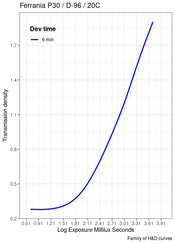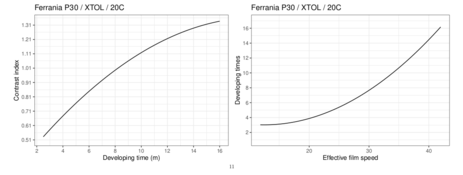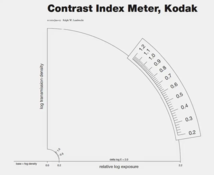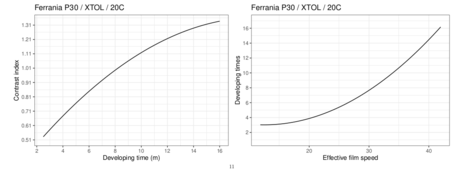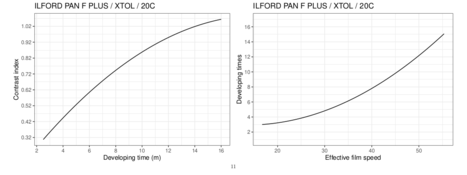I want to follow up on the discussion of the Exposure Index (EI) of the ILFORD PAN F Plus and Ferrania P30. My analysis will probably come as no surprise to those of you who know these films very well. For example, a lot of photographers use half the box speed as their EI for "normal" outdoor scenes. It is has been common practice for a lot of films out there, and so it turns out to be good practice for the PAN F Plus, but not exactly for the P30.
Here, I have a theoretical curve for the ILFORD PAN F Plus, based on my data, and, indeed, the EI (here I use the BTZS term "Effective Film Speed," or "EFS") turns out to be ISO 26 and a development time of around 5 minutes in XTOL at 20C in a rotary processor. The "normal" scene here is considered to be about 7 stops, or, to be exact, the Log Subject Luminance Range (LSLR) of 2.2. The BTZS framework uses the terms "Subject Brightness Range" or "SBR," instead of the more common "LSLR," but it is, essentially, the same thing, except SBR is typically expressed in stops, so the SBR of 7.3 equals the LSLR of 2.2.
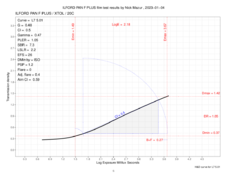
For the Ferrania P30, I didn't have to generate such a curve, as the 2.5 minute curve happens to correspond to the LSLR of 2.2, with the EFS (or EI) of ISO 12. So, yes, the P30 turns out be quite a bit slower than the advertised EI 80 or even EI 40, but it doesn't bother me. It's an interesting "special purpose" film as far as I am concerned.

As far as the term "ISO film speed" is concerned, opinions are divided on whether or not a film can have a range of ISO speeds or just one. Strictly speaking, a film can only have one "true" ISO speed, one measured by means of a specific formula. However, we can measure the "effective" film speed, or EI, at different average gradients, or CIs, to obtain a range of film speeds, which would be characterized by quantifiable gain, or loss, in shadow detail. In my test, the PAN F Plus can range from around EI 15+ to EI 50+ whereas the P30 ranges from EI 13- to EI 40+ or thereabouts. In practical terms, this would translate into setting one's exposure meter to, say, ISO 15 if one wants to pull the PAN F Plus (on a bright sunny day, with lots of shadow detail needed) or ISO 50, if one wants to slightly push it (on an overcast day). I don't mean to dispute the definition of either "ISO film speed," "EI," or "EFS." I just report on my findings.












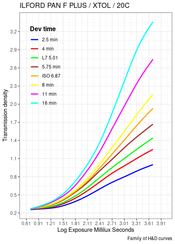


 .
.



